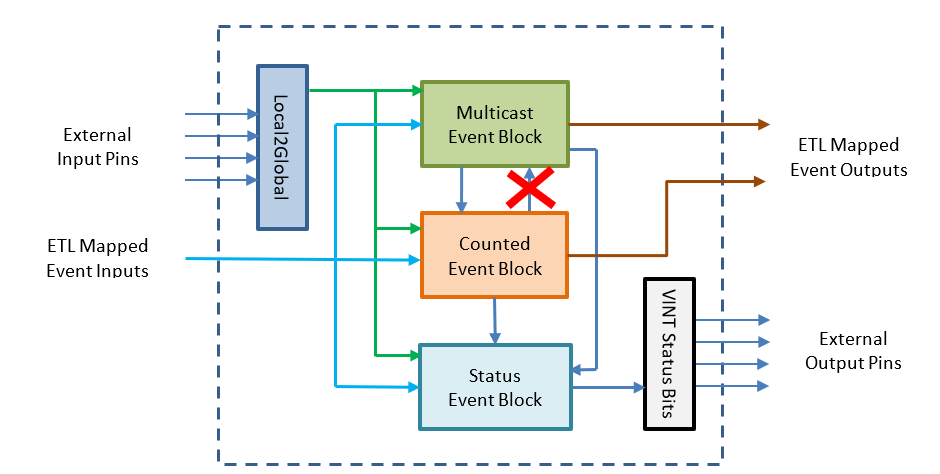SPRZ536B September 2022 – July 2024 AM69 , AM69A , TDA4AH-Q1 , TDA4AP-Q1 , TDA4APE-Q1 , TDA4VH-Q1 , TDA4VP-Q1 , TDA4VPE-Q1
- 1
- 1Modules Affected
- 2Nomenclature, Package Symbolization, and Revision Identification
-
3Silicon Revision 1.0 Usage Notes and Advisories
- 3.1 Silicon Revision 1.0 Usage Notes
- 3.2
Silicon Revision 1.0 Advisories
- i2049
- i2062
- i2063
- i2064
- i2065
- i2079
- i2097
- i2102
- i2103
- i2120
- i2134
- i2137
- i2146
- i2157
- i2159
- i2160
- i2161
- i2163
- i2166
- i2177
- i2189
- i2190
- i2196
- i2197
- i2205
- i2215
- i2216
- i2219
- i2232
- i2234
- i2242
- i2244
- i2249
- i2253
- i2271
- i2272
- i2278
- i2279
- i2310
- i2311
- i2312
- i2320
- i2326
- i2351
- i2362
- i2366
- i2371
- i2372
- i2378
- i2381
- i2383
- i2399
- i2401
- i2409
- i2414
- i2419
- i2422
- i2435
- i2437
- Trademarks
- Revision History
i2196
IA: Potential deadlock scenarios in IA
Details:
The interrupt Aggregator (IA) has one main function, which is to convert events arriving on the Event Transport Lane (ETL) bus, can convert them to interrupt status bits which are used to generate level interrupts. The block that performed this function in IA version 1.0 was called the status event block.
In addition to the status event block, there are two other main processing blocks; the multicast event block, and the counted event block. The multicast block really functions as an event splitter. For every event it takes in, it can generate two output events. The counted event block is used to convert high frequency events into a readable count. It counts input events and generates output events on count transitions to/from 0 to/from non-zero count values. Unlike the status event block, the multicast and counted event blocks generate output ETL events that are then mapped to other processing blocks.
An issue was found after design that could cause the IA to deadlock. The issue occurs when event “loops” occur between these three processing blocks. It is possible to create a situation where a processing block can not output an event because the path is blocked, and since it can not output an event, it can not take any new input events. This inability to take input events prevents the output path from being able to unwind, and thus both paths remain blocked.
Workaround(s):
Figure 3-3 shows the conceptual block diagram of IA 1.0. Potential loops are avoided by adopting the policy of not allowing the counted event block to send events to the multicast block. This method was chosen because it is more common to split an event first, and then count one while sending the other elsewhere. With this path blocked by convention, it is not possible for a single event to visit any block more than once and thus not possible for paths to become blocked so long as the outputs remain unblocked.
 Figure 3-3 Interrupt Aggregator Version 1.0
Figure 3-3 Interrupt Aggregator Version 1.0By following the conventions outlined here, the system is safe from looping hazards that can create a deadlock scenario.